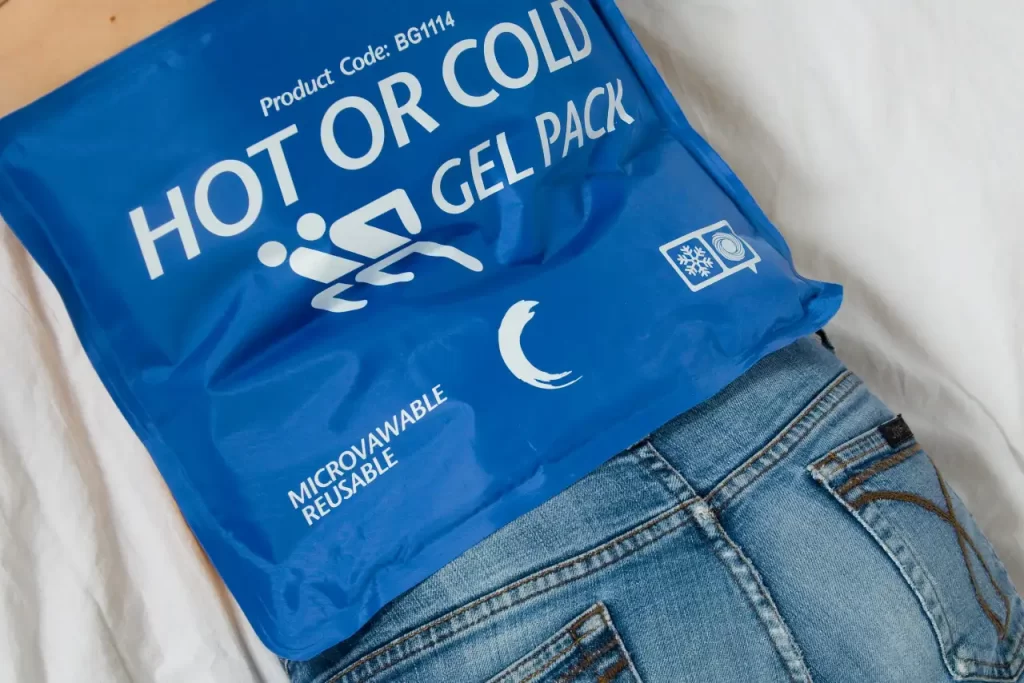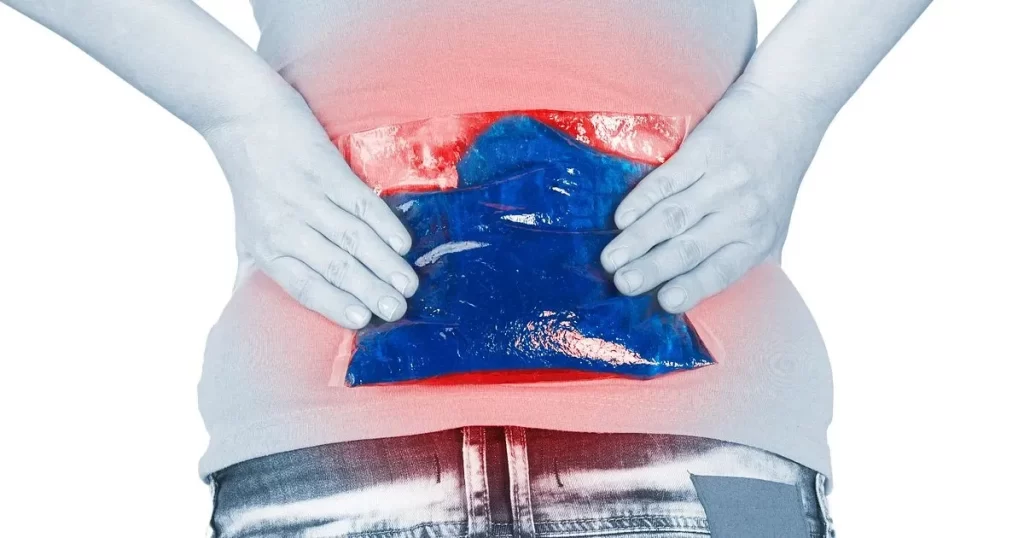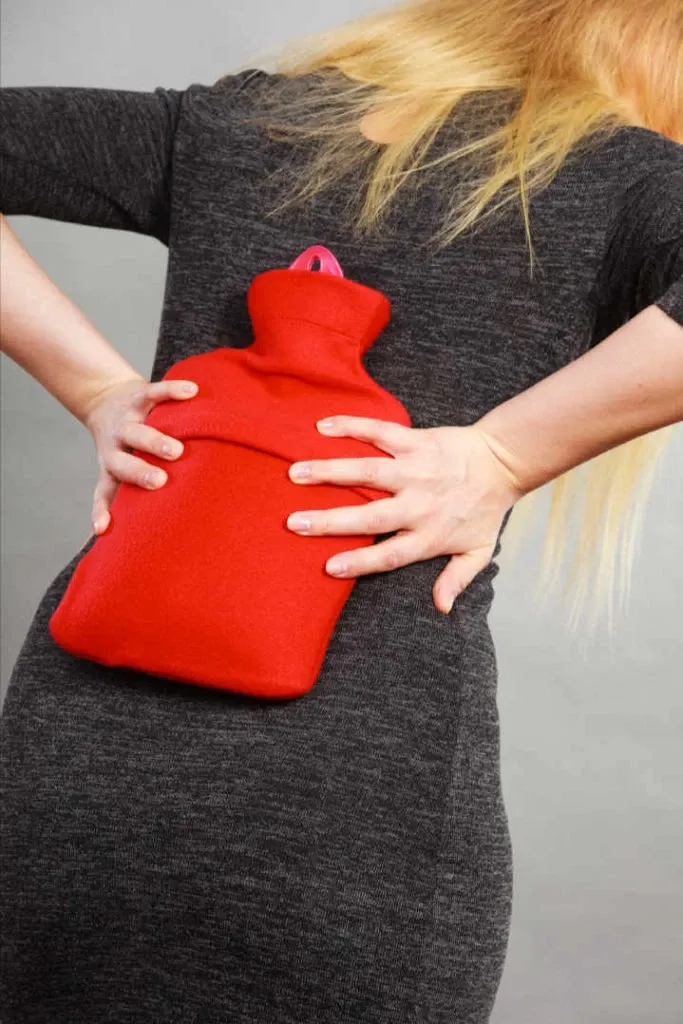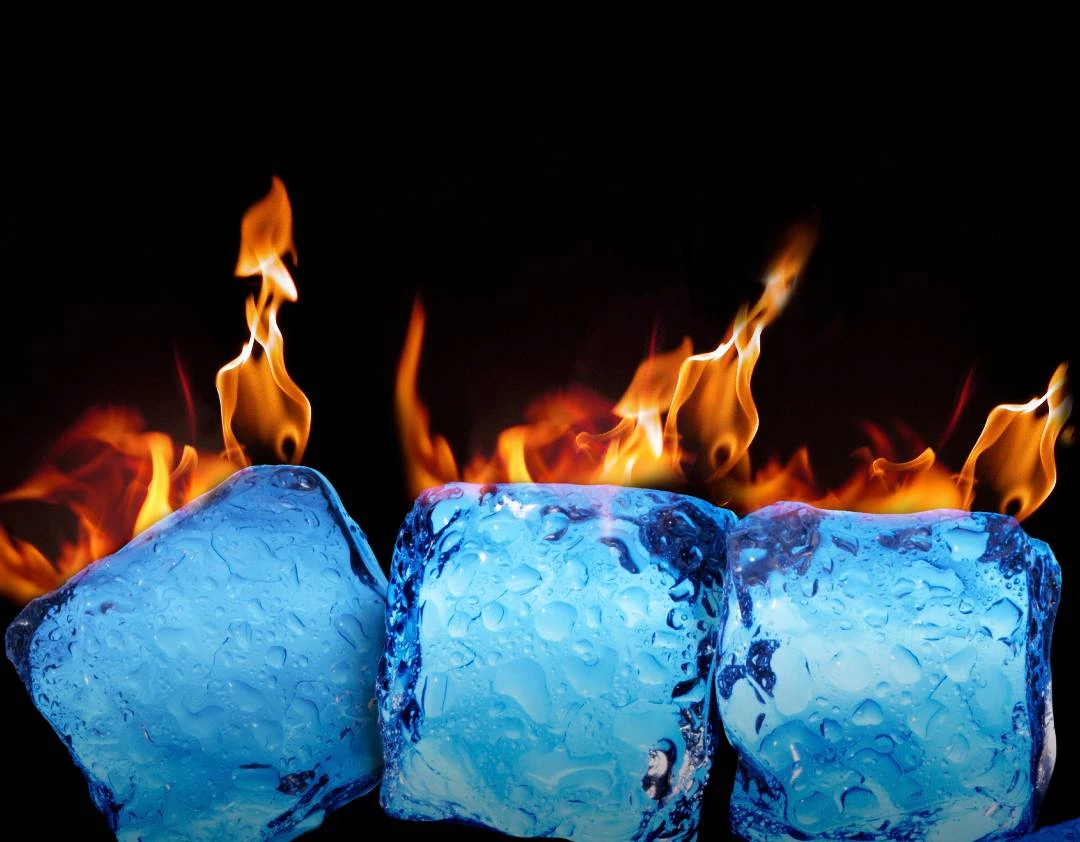Research has shown that applying heat and/or cold therapy to the lower back can alleviate muscle tension that is commonly present with low back pain.
Heat can help to loosen the muscle tightness that causes spasms, increase blood flow, and it improves the elasticity of connective tissue.
Cold can decrease the local tissue temperature which produces an analgesic and anti-inflammatory effect, thus reducing pain.
It is important to know when to use each therapy and at what point in your recovery journey you will benefit from it the most.
Sections
Some of the common low back conditions that typically benefit from heat or cold therapy.
1. Herniated or Degenerated discs
Lower back pain from common conditions, such as herniated or degenerated discs, spinal stenosis which is a narrowing of the bony canals of the spine causing nerve compression, or spondylolisthesis.

2. Direct Injury
Direct lower back injuries from falls, sprains, sports injuries or collisions.
3. Pulled Muscle
Pulled back muscle due to excessive strain or force leading to overstretching of the muscle fibers, such as from lifting weights.
4. Exercise Muscle Soreness
Exercise-induced muscle soreness, such as a from trying a new exercise, exercising without an initial period of warming up, or overdoing a specific exercise.
Note: Always use heat and cold therapy with intermittent breaks, so 15 to 20 minutes on and then an hour off before reapplying again.
This is to avoid skin and nerve damage.
Here are 3 guidelines to use heat and cold for different types of back pain
1. Use cold therapy first for the first 48 hours and then apply heat for acute back pain.
When your back pain is less than a 4-week duration and/or occurs due to a direct injury, use cold therapy first.
The cold therapy will lower the body tissue temperature, will help constrict the blood vessels, reduce swelling, decrease inflammation, and cause a numbing effect which will all help to reduce the pain.
After 48 hours or once the inflammation has subsided, you can then switch to heat therapy. Heat helps to improve the flexibility of soft tissues, movement of muscles, and overall functioning of your back.

The local warmth will stimulate blood circulation in your lower back, which will in turn bring healing nutrients to the injured tissues.
Again, similar to cold therapy you should use heat therapy intermittently for several hours or days in order to improve tissue healing and prevent a recurrence of pain.
2. If you have subacute or pain lasting for more 4-weeks apply heat therapy using a device that provides constant warmth.
Use a heated blanket wrapped around your lower back
You can buy a commercial adhesive wrap from the pharmacy that actually sticks to the lower back and will provide several hours of low-level heat
These approaches will provide closed heat to the lower back, stimulating and encouraging healing.
3. If you are exercising or doing heavy yard work ice your back immediately afterward to reduce muscle soreness.
Muscle soreness and back pain can occur from extensive workouts and heavy manual labor.
Soreness from these activities may start on the first day but normally continues to get worse on the second day and then peaks on the third day.
This phenomenon is called delayed onset muscle soreness or DOMS and can cause significant inflammation and pain in your back.
If you have back pain from exercise or heavy exertion, use cold therapy immediately after the activity to reduce tissue damage, inflammation, and pain.
After a 24-hour period you can switch it out to use heat therapy to encourage tissue healing.
How to combine heat and cold therapy in your daily routine.
You are more likely to benefit from heat and cold therapy when you make these treatments a part of your daily routine.

Below are a few tips to help you incorporate the use of heat and/or cold therapy in your everyday activities:
1. Keep a heat pad near your bed which you can use first thing in the morning to warm up your muscles if you wake up with a sore or stiff back.
2. Apply a cold compress before bed if you have exercised your back hard or overexerted yourself with yardwork.
3. Use a heat pad before sleeping and after waking up if you have chronic back pain.
4. Keep a couple of self-activating heat patches and ice packs in your bag or car to use while traveling or driving to and from work.
You do not always need to go out and buy special heat pads and ice packs as there are several do it yourself options.
Cold packs
You can use a bag of frozen vegetables such as peas or corn, these make great cheap ice packs.
Ice – placed in a bag and then wrapped in a towel
Always remember to have some fabric between your skin and the ice pack device to avoid skin burn.

Heat pack options
Putting rice in a sock and then heating it in the microwave is a great way to make your own heat pad.
You can also use a hot water bottle placed in beneath your lower back

Again, make sure you have some fabric between your skin and the heating device to avoid any burning or scolding, and do not directly lie on the ice or heat pack.
When should you not use heat or cold for your lower back?
Although hot and cold therapy can bring relief to low back pain sufferers there are certain conditions that should not be treated with heat or cold therapy.
Such as:
- If there is an open wound, bleeding, or when there is any fluid oozing out of the painful region.
- If you have a chronic condition such as diabetes mellitus, rheumatoid arthritis, multiple sclerosis, poor circulation, or a spinal cord injury it is advised to avoid any heat therapy.
With these conditions heat may cause excessive burns, skin damage, and increased inflammation.
Heat and cold therapy can help a whole range of lower back problems.
It is simple, inexpensive, and readily available and is actually one of the most forgotten about therapies.
If you or someone you know is struggling to recover from low back pain issues then go and check out my Lower Back Pain Recovery Challenge today and take the first steps on the road to recovery.

